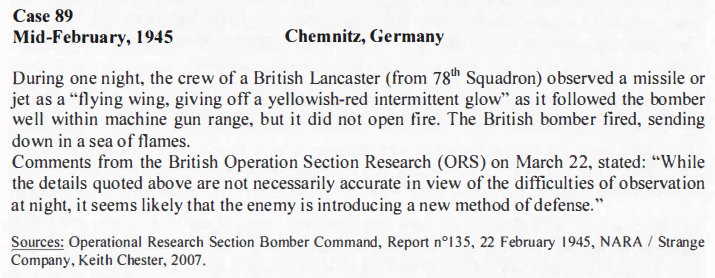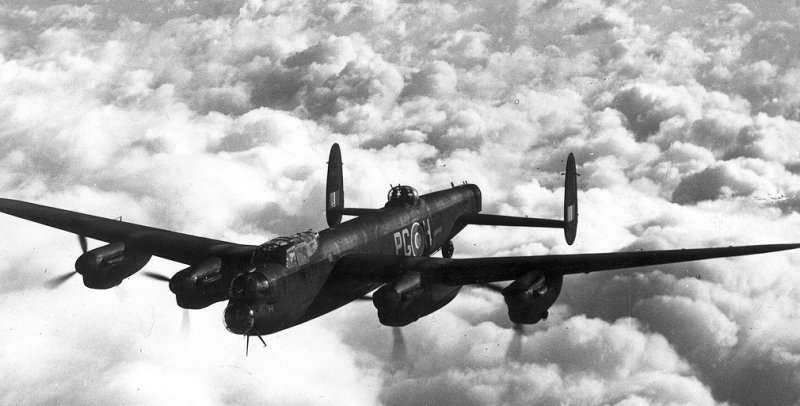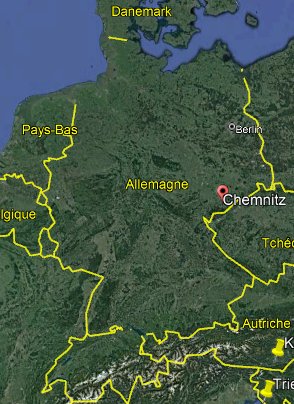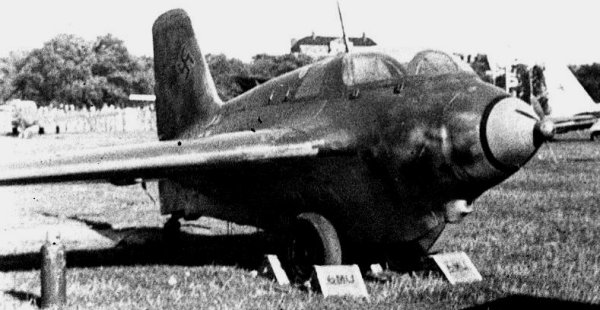ACUFO-1945-02-00-CHEMNITZ-1
In the 2000s, ufology sources on the Web, referring to the 2007 book “Strange Company - Military Encounters with UFOs in World War II” by Keith Chester, indicated that in mid-February 1945, in Chemnitz, Germany, at night, the crew of a British Lancaster of the 78 Squadron had observed a missile or jet aircraft like a “flying wing, emitting an intermittent yellowish-red glow” while following the bomber within machine-gun range. The craft did not open fire, but the bomber's crew did, sending the craft “down into a sea of flames.”
The British Operation Section Research (ORS) comments of March 22 are said to have stated: “While the details cited above are not necessarily accurate given the difficulties of observing at night, it appears probable that the enemy has introduced a new method of defense.”
The source is indicated to be the Report No. 135 of the Operational Research Section of the Bomber Command dated February 22, 1945, in the American National Archive.
| Date: | Mid-February 1945 |
|---|---|
| Time: | Night. |
| Duration: | ? |
| First known report date: | February 22, 1945 |
| Reporting delay: | Hours, days. |
| Country: | Germany |
|---|---|
| State/Department: | Saxony |
| City or place: | Chemnitz |
| Number of alleged witnesses: | Several. |
|---|---|
| Number of known witnesses: | ? |
| Number of named witnesses: | 0 |
| Reporting channel: | Military intelligence report, UFO book Keith Chester. |
|---|---|
| Visibility conditions: | Night. |
| UFO observed: | Yes. |
| UFO arrival observed: | ? |
| UFO departure observed: | Yes. |
| UFO action: | Approaches within machine guns range, does not open fire. |
| Witnesses action: | Shoot object down. |
| Photographs: | No. |
| Sketch(s) by witness(es): | No. |
| Sketch(es) approved by witness(es): | No. |
| Witness(es) feelings: | ? |
| Witnesses interpretation: | ? |
| Sensors: |
[X] Visual: Several.
[ ] Airborne radar: [ ] Directional ground radar: [ ] Height finder ground radar: [ ] Photo: [ ] Film/video: [ ] EM Effects: [ ] Failures: [ ] Damages: |
|---|---|
| Hynek: | NL |
| Armed / unarmed: | Armed, 8 7.62 mm machine guns. |
| Reliability 1-3: | 1 |
| Strangeness 1-3: | 2 |
| ACUFO: | Possible Messerschmitt Me-163 "Komet". |
[Ref. dwn2:] DOMINIQUE WEINSTEIN:

|
During one night, the crew of a British Lancaster (from 78th Squadron) observed a missile or jet as a “flying wing, giving off a yellowish-red intermittent glow” as it followed the bomber well within machine gun range, but it did not open fire. The British bomber fired, sending down in a sea of flames.
Comments from the British Operation Section Research (ORS) on March 22, stated: “While the details quoted above are not necessarily accurate in view of the difficulties of observation at night, it seems likely that the enemy is introducing a new method of defense.”
Sources: Operational Research Section Bomber Command, Report n°135, 22 February 1945, NARA / Strange Company, Keith Chester, 2007.
(Ref. nip1:) "THE NICAP WEBSITE":
Feb. 1945; Chemnitz, Germany
Flying wing, giving off a yellowish-red intermittent glow. (Page 149 Ref.1)
The reference 1 is described at the end of the document as “Strange Company (2007), Keith Chester”.
The Avro 683 Lancaster was a four-engine night bomber built in more than 7,000 units and it became, with the Handley Page Halifax, the main bomber of the Royal Air Force from 1942 on.
Its defense against German fighter planes was 8 7.62 mm machine guns.

|

|
It is quite impossible for me to understand what would have been seen in this case. A “missile” would suggest something that has no wings, or small sized fins. But a “flying wing” suggests exactly the opposite...
The fact that the British bomber managed to shoot it down, “sending it down into a sea of flames” may lead me to believe that it was a Messerschmitt Me-163 “Komet” rocket plane (photo below), which can vaguely resemble a flying wing due to the lack of fin, and whose fuel, by exploding, could result in this “sea of flames.”

|
There were around thirty operational Messerschmitt Me-163s at Brandis airfield from July 1944 to April 1945, from unit I./JG400. The “Komet” had a very short range of action, and the location of Brandis approximately 50 km north-northwest of Chemnitz makes this explanation plausible.
But basically all I can say is that this thing was probably not an extraterrestrial craft, and there is no indication that it was interpreted as anything other than a German craft.
Possible Messerschmitt Me-163 “Komet”.
* = Source is available to me.
? = Source I am told about but could not get so far. Help needed.
| Main author: | Patrick Gross |
|---|---|
| Contributors: | None |
| Reviewers: | None |
| Editor: | Patrick Gross |
| Version: | Create/changed by: | Date: | Description: |
|---|---|---|---|
| 0.1 | Patrick Gross | January 28, 2024 | Creation, [dwn2], [nip1]. |
| 1.0 | Patrick Gross | January 28, 2024 | First published. |